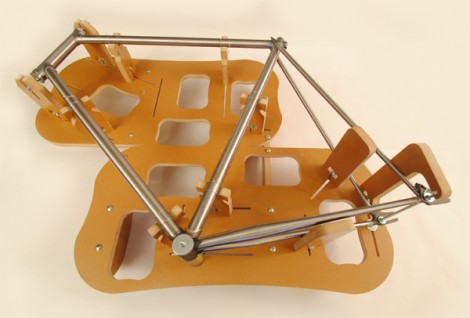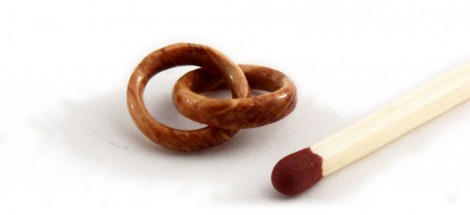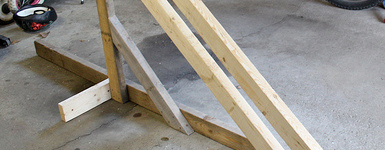
This bicycle frame jig is cut from MDF. It’s the latest in a growing trend that we love to see: the increasing availability of manufacturing techniques for the common hacker. This is a Kickstarter project, and alas it appears the designs are not available for you to cut your own. But we love the potential this shows, and maybe you can use the concept the next time you’re welding together a frame for something.
We really never look at building traditional frames at home. Mostly it’s the oddities that catch our eye. But if you’re into cycling and want to get your own custom-fit frame this has got to be the lowest-cost option available. In fact, you can get the jig and a tube set for under $600. The frame can be fit with just a few hand tools (a hack saw and a file). It uses lugs so the joints will be strong as long as you get the pipes fitting well enough for a quality welded joint.















